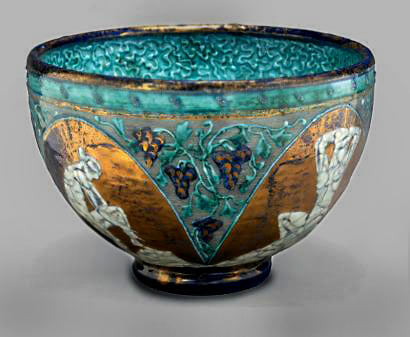Famous French Pottery
When you hear Renoir, Picasso and Monet, the first thing that will come to mind is France. However, painting is not the only art form that comes out of France. Pottery is one as well, although it’s less well known in other parts of the world.
Where It All Began
In the latter years which made up the 19th century, in France the pottery industry was revolutionised. A group of ceramists set out to transform pottery and ceramics from something which was simply just over the top to something which was truly a work of art.
This movement was pioneered by Ernest Chapelet, Théodore Deck, Jean Carriès and Auguste Delaherche. They felt that the ceramists that had gone before them had made excessive and improper use of ornament and, instead, adopted the Art Nouveau style.
Led by the principles of the British Arts and Crafts Movement, these radical French ceramists wanted to reform the decorative arts through the process of emphasising uniqueness and a return to craftsmanship.
Ernest Chapelet – The Master
Born in 1835 in Sèvres, Ernest Chapelet was a key figure in the French pottery movement. In addition, many of his works are on display in international public collections, such as the Musée d’Orsay in Paris.
In 1882, after having worked in the industry for 30 years, he opened a studio with Albert-Louis Dammouse (who was a sculptor). The stoneware that Chapelet produced was heavily influenced by designs coming out of Japan.
At various junctures in his career, he collaborated with a number of notable artists, such as:
- Félix Bracquemond,
- Paul Gaugin,
- Jules Dalou, and
- Auguste Rodin.
Théodore Deck
Joseph-Théodore Deck was born on 2 January 1823 in Guebwiller, Haut-Rhin. He moved to Paris when he was just 24 and established his own workshop specialising in earthenware. Deck experimented with Islamic-style pottery, in particular pottery which was made in the Iznik style.

Jean Carriès
In addition to being a ceramist, Jean-Joseph Marie Carriès was also a miniaturist and sculptor. He worked mainly in the stoneware medium and many of Carriès’ works include faces and heads with grotesque expressions on them.
Born in Lyon in 1885, Carriès was orphaned when he was six and was raised in a Roman Catholic orphanage. He apprenticed with a local sculptor and moved to Paris in 1874 to study at the École des Beaux-Arts. While many of his works were indeed controversial, later on in his career, Carriès was inducted into the French Legion of Honour.
Auguste Delaherche
Auguste Delaherche was a leading figure on the French pottery scene during the Art Nouveau period. At the beginning of his career, he made stoneware but later branched out into porcelain, making him as divrse as the games you’ll find recommended at https://onlineslotsau.com/.
Delaherche trained at the École des Arts Décoratifs in Paris. When he started his pottery career Delaherche began with salt-glazed stoneware. Interestingly enough, he bought Chapelet’s studio in Paris on the rue Bloment.
Delaherche never did any of the throwing himself. Rather, he designed the work and gave these drawings to assistants. Delaherche concentrated on designing vases.
